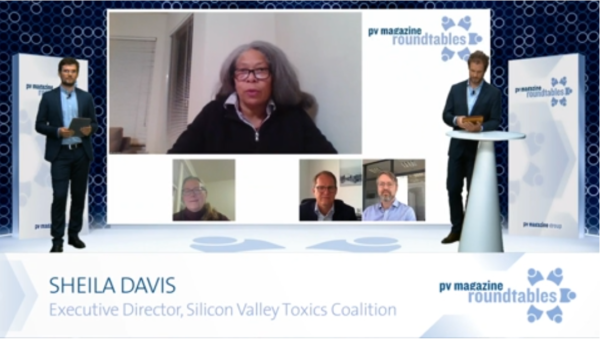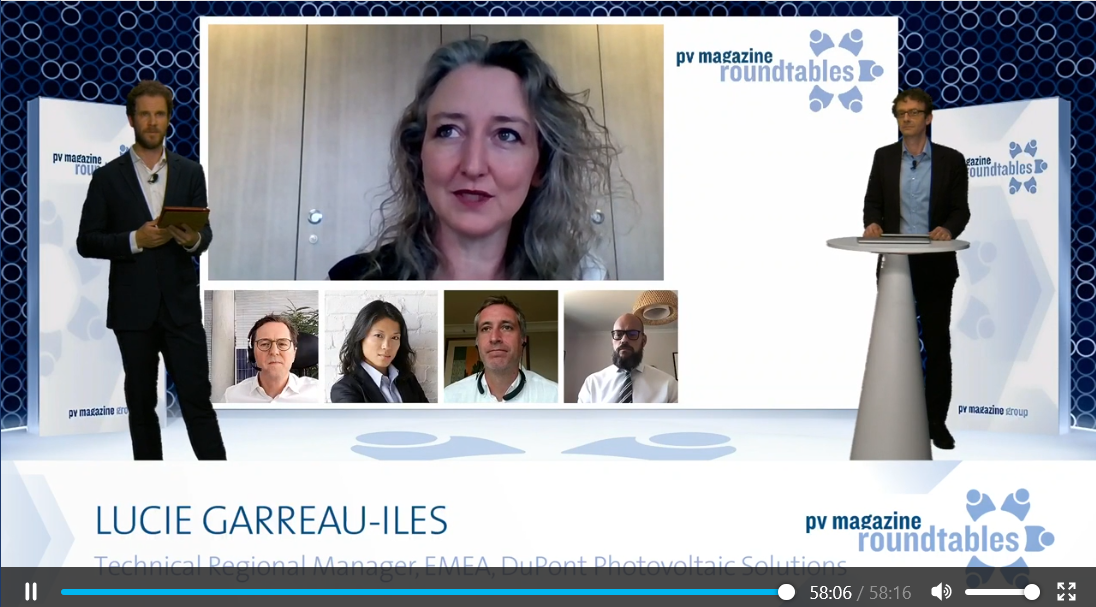The pandemic and the resulting lockdowns in Europe have led to steep declines in electricity demand across the continent with some countries impacted much more than others. Mateusz Wronski, Head of Product Development, Aurora Energy Research, provided a snapshot of the situation in various countries in the month of May. It showed Germany faring rather well with a decline of under ten percent compared to the same weeks in May 2019, but the United Kingdom dropping by as much as 21 percent when compared to the same period last year.
In this environment of falling electricity demand and with it wholesale power prices, potential PPA offtakers are in no hurry to commit to medium- or long-term PPAs, be they 5 years, 15 years or longer. However, the consensus of the Market Roundtable, which also included representatives from BayWa r.e., Smartenergy and Vattenfall, was that power prices would not stay depressed for too long and that strong drivers remained to propel the European PPA market forward. Certainly, the European Green Deal put forth by the new European Commission, as well as the push among corporates and utilities to go green, act as strong drivers to encourage more clean energy sourcing in the form of solar and other renewable energy PPAs.
Christian Pho Duc, Managing Director of Smartenergy Projects, provided an update on the potential of green hydrogen to be coupled with solar PV to provide other sources of income for solar developers. Smartenergy is in the process of setting-up PV-powered hydrogen production in Portugal and plans to deliver its first green hydrogen to customers in 2022. Pho Duc highlighted the fact that the non-availability of a grid connection is “no longer a show stopper” for generating revenues for a PV power plant in Portugal or for that matter other countries with a demand for green hydrogen. Or at least, hydrogen can serve as a back-up or alternative revenue stream when building the business case for a PV power plant.
Asset management in focus
Large PV systems were also the focus in the Asset Management Roundtable, which opened the two-day event. This session featured three very experienced asset managers, including Jacqueline Huynh, Portfolio Manager Infrastructure Equity at Allianz Global Investors, Stefan Müller, co-founder and Board member at Enerparc, and Duncan Bott, Partner at LCF Alliance. All three manage hundreds of megawatts of PV assets and getting the right actionable data from these plants is key to boosting performance. On the one hand, you require a certain minimum amount of data; on the other, you don’t want to be overwhelmed, meaning you need the right tools and algorithms to turn reams of data into actionable information, yielding specific action items; for example cutting the grass to remove shading of the modules.
Duncan Bott revealed his sweet spot, referring to the plants LCF acquires as “unloved” assets involving components from myriad equipment vendors, but with a geographic focus on Italy and attractive legacy Conto Energia feed-in tariffs. These are real turnaround stories, often involving plants with little or sub-standard documentation requiring thorough due diligence and post-acquisition O&M to get these assets up-to-speed.
Lucie Garreau-iles, Technical Regional Manager, EMEA, DuPont Photovoltaic Solutions, and Jan Napiorkowski, Global Head of Clean Energy, Ariel Re, provided the perspectives of a technology provider (DuPont) and insurance provider (Ariel Re) with extensive experience in international PV deployments. Garreau-iles pointed to the fact that conditions in the field can yield defects that cannot necessarily be detected when components such as modules are disassembled and scrutinized in conditions that are very different (and often less harsh) than operating conditions out in the field. Napiorkowski highlighted the value of suitable solar insurance, such as performance ratio or production insurance, to provide a back-stop for investors and other stakeholders in a project.
The remaining two sessions of the pv magazine Virtual Roundtables Europe 2020 focused on quality and sustainability, both long-standing topics at pv magazine. In fact, when pv magazine launched its Roundtables over five years ago, quality formed the core topic. Instead of talking about this topic in an abstract way, specific cases are presented and discussed to zero in on specific defects and who should be held accountable for these problems. At this week’s Quality Roundtable the focus was again on specific cases or specific challenges facing the industry. For example, Monsoon Wang, Product Director, Longi Solar, demonstrated how the Chinese manufacturer’s gallium-doped mono wafers provided a solution to light induced degradation (LID) of solar panels. Another highlight of the Quality Roundtable involved a detailed discussion of floating PV and how best to address the environmental challenges in the rapidly expanding market segment.
Sustainability across supply chains
The Sustainability Roundtable on Wednesday morning showed the power of online events. Of the eleven speakers and panelists in this Roundtable, three joined from a time zone nine hours away in California, including Sheila Davis, Executive Director of the Silicon Valley Toxics Coalition, Nancy Gillis, CEO, Green Electronics Council/EPEAT, and Dustin Mulvany, Professor at San Jose State University. All three have been long-standing champions of sustainability in the electronics and solar PV markets and the consensus developed at this Roundtable was that the global solar PV industry clearly requires sustainable hardware to really be sustainable. International standards and product labeling are two important steps that need to be taken to get there.

Image: pv magazine
Be it quality high-efficiency solar panels, European PPAs, PV-produced green hydrogen, or sustainability standards and labels for solar, these are all very dynamic areas of our industry with a bright future and plenty of room for innovation and further case studies to debate and learn from. It is also encouraging to see these Roundtables taking place in the middle of a global pandemic, providing a way to discuss the latest trends and network with other professionals in this industry.
Online events by themselves are a cutting-edge area of technology and with almost 2,000 professionals signing-up for this week’s Roundtables, this technology seems ready for prime time and the scale needed for our expanding industry. As Pierre Verlinden, founder and managing director of Amrock, pointed out at the Sustainability Roundtable on Wednesday, we’ll need 70 to 80 TWp of solar PV by 2050 to meet the Paris Agreement objectives to limit the impact of climate change and this pathway will give rise to many more solar professionals, who wish to interact and learn from each other, whether face-to-face or online.
Also, we extend our warmest regards and a big thank you to all our sponsors who have been vital for realizing this event.
This content is protected by copyright and may not be reused. If you want to cooperate with us and would like to reuse some of our content, please contact: editors@pv-magazine.com.



By submitting this form you agree to pv magazine using your data for the purposes of publishing your comment.
Your personal data will only be disclosed or otherwise transmitted to third parties for the purposes of spam filtering or if this is necessary for technical maintenance of the website. Any other transfer to third parties will not take place unless this is justified on the basis of applicable data protection regulations or if pv magazine is legally obliged to do so.
You may revoke this consent at any time with effect for the future, in which case your personal data will be deleted immediately. Otherwise, your data will be deleted if pv magazine has processed your request or the purpose of data storage is fulfilled.
Further information on data privacy can be found in our Data Protection Policy.